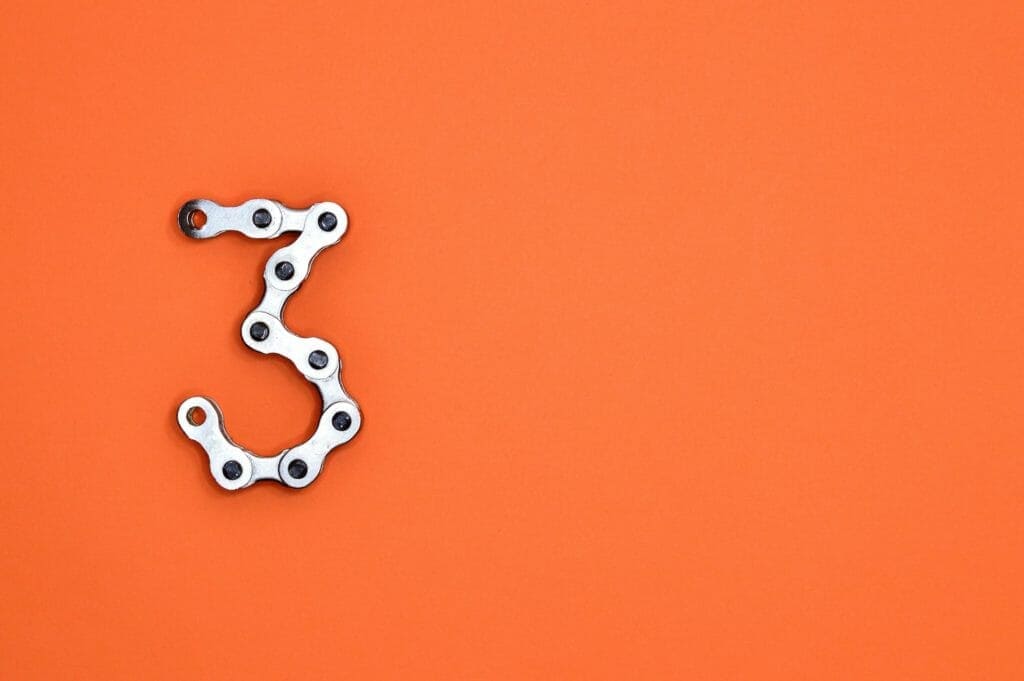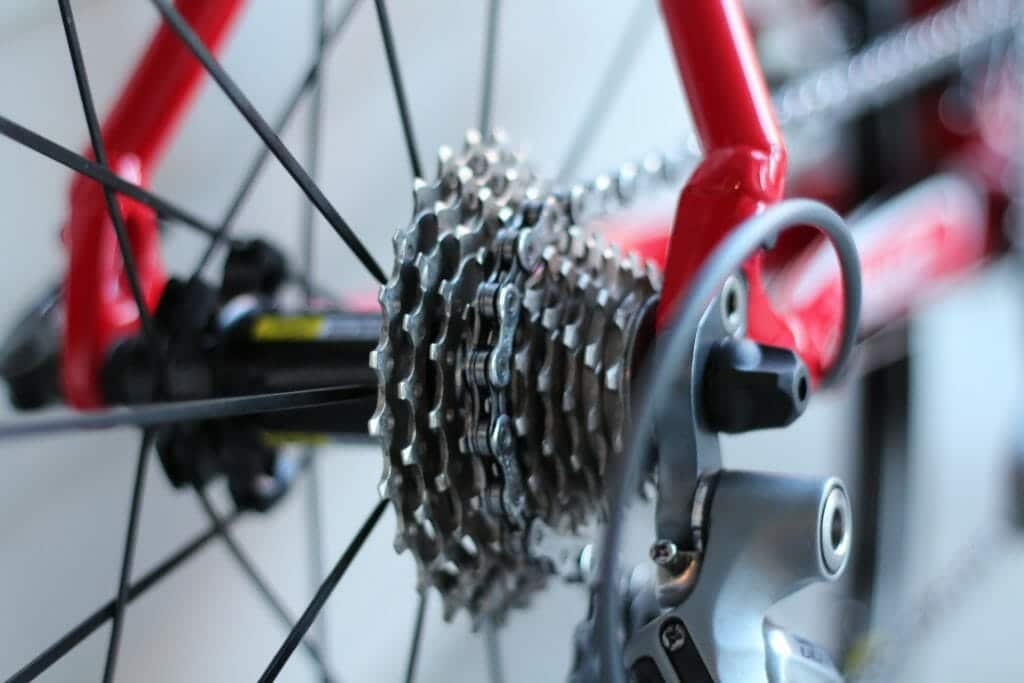After you’ve been biking for a while, you will get a good understanding of the maintenance intervals for the parts on your bike. We visited one part in my post, “How long do Mountain Bike Tires last?“.
While it’s common knowledge that you replace things like brake pads and tires, it’s easy to forget vital things like your bike chain. Being one of the most important parts of your bike, you should definitely know how much life you have left in your bike chain. So, how long do bike chains last?
Generally, bike chains last 2,000 to 5,000 miles, but this time can be shortened or lengthened depending on several factors. Some people may find their bike chain lasting years, while others need to replace every 6 months. Since there is no standard timeline, it is best to know all the factors that affect the life of your bike chain.
How often should you replace a bike chain?
When we’re talking about how long bike chains last, you’re probably thinking about the next time yours will need to be replaced.
Unlike most other parts, there is no set timeline telling you how often to replace a bike chain.
Being one of the more inexpensive bike parts you can buy, some people will replace their chain every few months. Since they’re also one of the toughest things on your bike, other people will go years without ever needing to change it.
At the end of the day, how often you replace a bike chain comes down to personal preference, and of course, safety.
When to replace a bike chain

With special considerations for safety, it is vital that you know when to replace a bike chain.
Your chain transfers force to the rear wheel, ensures smooth shifting, and maximizes your pedaling power. A new chain is one of the cheapest upgrades you can do to your bike to make it run as smoothly as the day you bought it. For this reason, you may prefer to replace your bike chain frequently.
At the other end of the spectrum, you may just be an average rider who only takes their bike out on the weekends. In this case, you can probably get away with only replacing your bike chain when you notice signs of wear.
For every rider, you should change you bike chain as soon as you start to notice signs of wear.
A failing bike chain can cause problems such as bad shifting and costly repairs, like worn teeth on your cassette and chainring. Worse than that, your chain can break completely, leaving you stranded and possibly hurt.
How do I know if my bike chain is worn?
Bike chains wear down as they stretch over time. As you ride, rocks, dirt, and sand fill the cracks in your chain. Your bike chain then acts as a circulating strip of sandpaper to anything it comes into contact with.
If you’re worried about damaging your drivetrain with a worn bike chain, rest assured that there is an easy way to tell if a bike chain is worn down or failing. In fact, there are a few ways to test your chain for wear, here are 4 popular methods:

The Feel
Seasoned riders often develop a clear intuition about their bike, especially when it comes to performance. You can feel a bent hanger, friction in a brake line, and even a stretched chain. If you have trouble pinpointing a shifting issue, or you find yourself losing pedal efficiency, chances are, you need a new bike chain.

Visual Check
A visual check is the cheapest and easiest way for you to check your chain for wear. Depending on how you ride, you can probably catch visual signs of wear and tear early on. Chipped chain links or stripped teeth on your cassette or chainring are all tell-tale signs. Just know, that if you are already seeing visual signs of wear, you need to change your chain immediately. You may even need to replace other parts of the drivetrain as well.

Pull the chain
Another simple way to check your chain for wear is the “Lift off method”. This is another pretty simple technique for testing your bike chain for stretch. When we talk about chain wear, we are mostly talking about a stretched chain. Unless you have a measuring tool, there is really only one other way to see if your chain links have stretched.
Shift your rear derailleur to the smallest cog on the cassette and your front derailleur to the largest cog on the chainring. Pull the chain away from the chainring to create a gap between the chainring and the chain. If you see a considerable amount of daylight between the two, it is time to replace the chain.

Measure
The best way to check a bike chain for wear or stretch is to use a measuring tool. Even better, these tools aren’t even that expensive. Just a few dollars’ worth of an investment and you have the most accurate way to check your bike chain.
When it comes to precision, there is no better name in the industry than ParkTools. You can check out their measuring tutorials here.
If you don’t have the actual chain measuring tools used by Parktools, the CC-2 and CC-3.2, you can also use the ruler method.
Start with one rivet of your bike chain and line it up with the zero mark on your ruler. With the ruler parallel to the bike chain, count 23 more rivets from the zero mark. The 23rd rivet should line up perfectly with the 12” mark. If the 23rd rivet is off by more than 1/16”, it is time for a new chain.
Why do bike chains stretch?
Even if you take good care of your chain and there’s no physical damage, you will still end up finding yourself needing to replace it. This is because bike chains stretch over time.
Your bike chain stretches from normal use, no matter how well you maintain it. As you ride, you are constantly putting your bike chain under stress and tension. This force is exaggerated when you climb hills or pedal with a lot of effort.
But the stretching of a bike chain is not necessarily due to the stress, it is more so attributed to the dirt and grime that clogs the chain, wearing the pitch and bushings. As the bushings wear down, the chain develops a certain amount of “play”. This is what we refer to as a stretch in the chain.
Bike chain Maintenance

There’s really not too much to maintaining a bike chain. Although bike chain maintenance is simple, it is the most important factor that will improve the life of your bike chain.
To make sure you get the most out of your bike chain, here are some simple tips for maintaining it.
Cleaning
This is the most vital step in bike chain maintenance. The cleaner you keep your chain, the longer it will last.
The best cleaning solution involves a full bath in a cleaning solvent, this allows you to penetrate the grit and grime that hides in the deepest parts of your bike chain. Since this is not always possible, you can get a pretty good clean from a rotating bike chain cleaner like this one from Amazon
Lubrication
The next thing on the list of importance is proper lubrication. A properly lubricated bike chain will improve longevity and ensure efficient operation.
Depending on the conditions you ride in, you will either use a “Dry Lube” or a “Wet Lube”. Just like the solvent you used to clean the chain; you will want to find a good solution that penetrates the deepest parts of your bike chain. I recommend Muc Off Dry Lube, as it’s versatile and penetrates deep into the chain.
Regular Checks
The best way to know how long a bike chain lasts is to do regular checks on it.
If you check your bike chain regularly, you will catch any problems before they start. And chances are, you will also be keeping it cleaned and properly lubricated.
Like anything else, consistency is key when it comes to bike chain maintenance. Proper care matters not only to the life of your bike chain but also to the life of the drivetrain altogether.
Conclusion
So how long do bike chains last? Well, with round-the-clock maintenance and a relaxed riding schedule, you can get a few years out of a bike chain. And though it may “stretch” or wear down over time, proper care can keep your bike chain in operating condition for much longer.
However, it is still recommended that you change your bike chain yearly. It is a relatively inexpensive and easy replacement and can save you hundreds of dollars in future repairs.
If you have any questions or feel like you have any helpful tips, please comment below.

